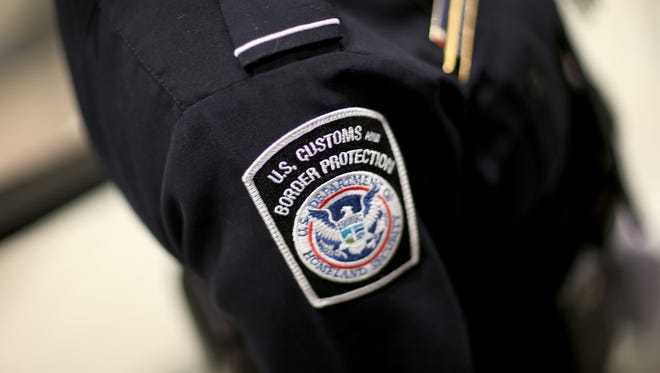As DACA deadline looms, these are legal paths to U.S. for immigrants

On Tuesday, the Trump administration confirmed it will wind down an immigration program for undocumented immigrants brought to the U.S. as children.
The Deferred Action for Childhood Arrivals program, DACA, will end within six months, leaving Congress a window to continue it through legislation. The program initiated by President Obama in 2012 provides some protections for undocumented immigrants who came to the U.S. when they were younger than 16 and applies to those under age 31 as of June 15, 2012, if they meet specific requirements.
More than 800,000 undocumented immigrants are eligible for the program.
All this begs the question: How does an immigrant come to the U.S. legally? There are several ways for non-U.S. citizens to enter the country, whether for temporary work or to live permanently. Here’s a look at the different paths, based on information from the U.S. Citizenship and Immigration Services (USCIS) and other sources.
Visa
What is it? A visa is basically a travel document to let the owner apply for entry to the United States. The type of visa varies depending on your reason for visiting the U.S. (more on that shortly). A visa does not guarantee you will be allowed to enter the U.S. Customs and Border Protection officers review visas and details such as length of visit, reason for stay and conditions of the visit before deciding whether to allow non-U.S. citizens to enter the country.
How does the process work? There are two types: a non-immigrant visa for temporary visits and an immigrant visa for those who plan to live in the U.S. permanently. Visas are classified based on the purpose of your visit. For example, according to the State Department, athletes are required to apply for a B-1 visa, while temporary workers must get a H visa. The type of visa you receive might also require additional approvals from other agencies such as USCIS or an employer, if you are a temporary worker. Visa applicants must also pay fees and participate in a visa interview.
Refugee status
What is it? The status applies to people outside their country of origin who are unable or unwilling to return to that country because of persecution or a well-founded fear of persecution based on the person’s race, religion, nationality, membership in a particular social group, or political opinion, says UCSIS on its website.
How does the process work? For most refugees, the first step is a review by the United Nations High Commissioner for Refugees. UN workers screen applicants and decide what country suits them – only about 1% of applicants are referred to the U.S.
A person seeking refugee status in the U.S. must get a referral from the U.S. Refugee Admissions Program (USRAP). If accepted, they receive help with their application and an interview by a USCIS officer to decide eligibility. Once cleared to enter the U.S., refugees receive a medical exam, cultural orientation, help with travel plans, and a loan, says UCSIS, as well as additional medical and financial help if needed.
The process may involve extra screening depending on your country of origin. Refugees from countries with ties to terrorism require extra checks such as iris scans. Also, their cases are reviewed by more than a half dozen U.S. agencies, including the FBI and National Counterterrorism Center. On average, the process can take between 18 and 24 months.
If you are admitted, you must apply for a green card within one year.
Green card
What is it? A green card is for permanent residents in the U.S. who are not citizens. The card allows them to live and work in the country legally.
How does the process work? There are three primary ways to become eligible for a green card: through family, through your employer, or through refugee or asylee status. For family, immediate relatives or family members of a U.S. citizen or green card holder are eligible. Immediate relatives earn priority status for receiving a green card. Non-citizens can also earn a green card through work, either a permanent job offer in the U.S. or through an investment or business leading to the creation of jobs in the U.S.
Citizenship
How does the process work? Residents who have held a green card for five years and remain in good standing can apply for citizenship. After filling out necessary forms and have your biometrics taken, you participate in an interview which includes both an English and civics test. If you fail either portion, you can get a retest between 60 and 90 days after your first interview. Once you get the all-clear, you take the Oath of Allegiance:
"I hereby declare, on oath, that I absolutely and entirely renounce and abjure all allegiance and fidelity to any foreign prince, potentate, state, or sovereignty, of whom or which I have heretofore been a subject or citizen; that I will support and defend the Constitution and laws of the United States of America against all enemies, foreign and domestic; that I will bear true faith and allegiance to the same; that I will bear arms on behalf of the United States when required by the law; that I will perform noncombatant service in the Armed Forces of the United States when required by the law; that I will perform work of national importance under civilian direction when required by the law; and that I take this obligation freely, without any mental reservation or purpose of evasion; so help me God."
Homeland Security unveils sweeping plan to deport undocumented immigrants
Trump's immigration order explained
What's next in legal battle over Trump's immigration ban
Fact check: Trump’s immigration policy vs. Obama's
Contributing: Alan Gomez, USA TODAY. Follow Brett Molina on Twitter: @brettmolina23.